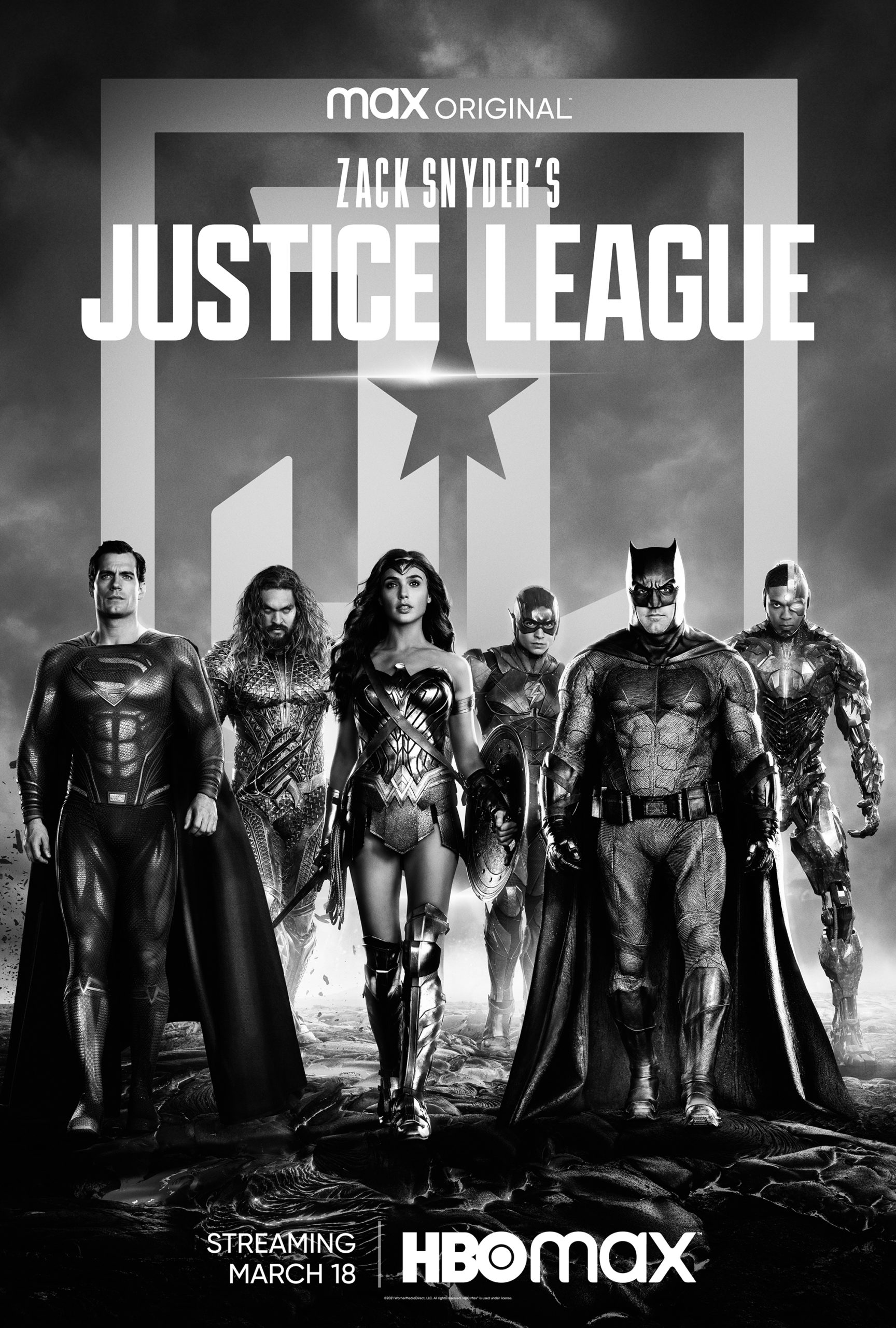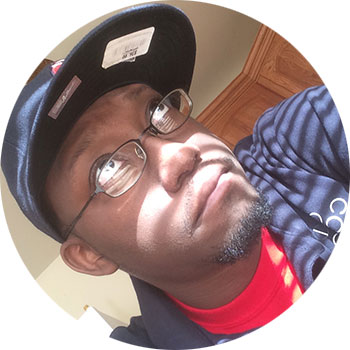
21 Mar Zack Snyder’s Justice League Review
ZACK SNYDER’S JUSTICE LEAGUE
dir. Zack Snyder, starring Ben Affleck, Gal Gadot, Ray Fisher, Ezra Miller, Henry Cavill, et. al
A group of disparate heroes attempt to save the world from the catastrophic threat of Darkseid, Steppenwolf, and their army of parademons.
A four hour long epic superhero movie that defied all expectations, Zack Snyder’s justice league is a rare pop culture occasion that exemplifies the phrase dude, you just had to be there. It’s impossible to review this movie without comparing it to its 2017 antecedent, the Joss Whedon helmed Justice League. Zack Snyder’s vision for the film deserves to be judged on its own merits and faults and, for that reason, I’ll try my best to keep the comparisons to as few as possible. There’s little need to delve into the back story and drama surrounding this entire project; if you know, you know and if you don’t, not knowing won’t change your impressions of the film.
The story of Zack Snyder’s Justice League picks up just before the ending of Snyder’s 2015 superhero movie Batman v Superman. As Superman is speared through the heart thanks to one of Doomsday’s bones, the cry of anguish he lets out reverberates across the world, serving to introduce us to a few of our various characters. The amount of time that lapses after that opening montage is unclear; it seems that it could be days (the idolatry statue of Superman smashed by Doomsday remains in rubble) or it could be weeks (as evidenced by certain items in Lois Lane’s nightstand). Regardless, Superman’s death toppled a number of dominoes that lead to the awakening of the Motherboxes, the shiny Maguffins of the DC universe. With the awakening of the Motherboxes comes Steppenwolf, hype man for our big bad Darkseid, who is attempting to locate the Motherboxes and fuse them together so Darkseid can cleanse the world and claim it as his own.
As far as supervillain plots go, that’s about as standard as it comes. With the Marvel Cinematic Universe kicking into a new gear around 2012, audiences have come to demand more complex, layered, and nuanced antagonists; Darkseid’s attempt to take over the world is a thin, one note ordeal, as flat and uninteresting as a James Bond villain. The swerve comes with Steppenwolf, low on the chain of Darkseid henchmen but the primary antagonist of the film. After committing an unspoken folly, Steppenwolf’s desire to prove himself worthy to his master is his driving force of the film, making for a more layered performance than originally received. Sympathetic? Absolutely not but still more understandable and relatable; who amongst us hasn’t wanted to prove their worth?
The first 75-90 minutes of the film are a bit disjointed, hopping between multiple plots of Bruce Wayne attempting to assemble the team, establishing Aquaman and Flash, cramming in a Cyborg origin story, and occasionally cutting to a moping Lois Lane. This setting of the board and introducing characters sacrifices the pacing of the movie. If any serious editing needed to happen, the first two parts of this six part film required the most judicious editing. Once we settle into the third part, when the story really starts advancing, is when things get interesting.
The story beats of Zack Snyder’s Justice League remain the same: Wonder Woman foils a terrorist plot, Batman visits Aquaman and Flash, the assembled team fights Steppenwolf under Gotham Harbor, they resurrect Superman, we get that big battle, and then they go on to defeat Steppenwolf in a third act climax. It’s the quiet parts in between that are different; a four hour run time allows for better character development. As action oriented as Zack Snyder is known for, some of the quieter moments remain some of the better ones. Victor stone and his interactions with his father are more fleshed out, the reason for Victor’s animosity and bitterness further explored. Audiences get a better introduction to Barry Allen as he saves Iris West, presumably setting up for his solo movie. Diana retrieving the arrow sent by the Amazons is given more weight, and even Bruce and Alfred’s relationship is mined more deeply.
The performances by the ensemble cast remains strong: Gal Godot as Diana Prince is still warm and radiant, Affleck is one of the best actors to portray the Batman to date, Ezra Miller plays the comedic aspect of the team with skill, and Cavill, while not in the movie much, still remains the best Superman to date. The delight comes with Ray Fisher, who has the best comeuppance as far as comparisons between the two films. While the extended runtime still needs editing, the fact that Whedon chose to edit out most of Fisher’s work is criminal. He lights up the screen with a heavy bitterness that still doesn’t drown out his natural charm. Whedon did provide Fisher with what I think is the best line of the 2017 release (if these are gifts, why am i the one paying for them?) and it’s unfortunate we don’t get it in this version. Still, of any actor that has a drastic change from the Whedon release to this one, its Ray Fisher’s Cyborg. Conversely, Lois Lane is neutered in this release, relegated to mostly bit parts of sulking at home over Clark’s death and rejoicing over his eventual resurrection. Whedon’s version gave her a bit more agency, being the anchor that serves to ground Clark at a crucial moment. She’s still that anchor here, but the circumstances have taken away that urgency and a bit of her agency.
As far as directing, this is some of Zack Snyder’s best work yet. Apart from Watchmen, which I still think is his pinnacle, he brings a different sort of flavor to Justice League not found in Man of Steel or Batman v Superman. All the Snyder classics are there: extreme slow motion followed by speed ramping, frantic action, and Snyder’s constant striving for an epic tone are all present here. Again, the quieter moments are where he seems to have grown as a filmmaker; bombastic fight scenes are only as good as the underlying development of the characters in between. Artistic flourishes like the dirge sung by the Icelandic women as Aquaman leaves and the interaction between Ma Kent and Lois Lane provide more weight and gravitas for the characters, a compliment to screenwriter Chris Terrio. But Snyder doesn’t get Superman! is an argument often heard with which I disagree. I think Snyder has updated the story of Superman for a more modern audience, eschewing the Chris Reeves era paragon of hope and decided instead to show a more realistic lens of an alien god living on our planet and the struggles he endures. Unfortunately, one of the glaring tragedies of ZSJL is the fact that we have a Justice League that is mostly absent of a Superman, its central figure. With such an egregious run time, the lack of Superman feels awkward and the cast incomplete. Even with his return he’s mostly absent or separate of the group until the third act battle which means we as an audience get precious little time with a fully formed League.
The cinematography is absolutely gorgeous; Zack Snyder and cinematographer Fabian Wagner have an incredible eye for shot composition and lighting. Snyder uses his feel of great visuals to his full command here, helping to lend to that epic tone. Are the slow motion shots excessive? Absolutely. There’s little reason something as simple as Lois Lane walking out of a coffee shop and opening her umbrella needs to be shown in slow option. Nothing is gained by it and nothing would be lost if it was presented in normal speed.
The most egregious downfall of the entire film lies squarely in the absolutely absurd epilogue. What serves as the film’s coda are two big scenes, one featuring the return of Jesse Eisenberg’s Lex Luthor and Joe Manganiello’s Deathstroke and the other a rehash of the “Nightmare Batman” scene, plucked from the middle of the 2017 release and recontextualized. The Luthor/Deathstroke scene sets up a glimmer of a continuation of Snyder’s story with Luthor beginning to set up the Legion of Doom, now an idea unlikely to come to fruition (but I also thought this movie would never be released so what do I know?). The issues lie in the Nightmare sequence, that sees a radically different group of heroes working together to bring down evil Superman. The crux of the scene lies between Batman and Jared Leto’s Joker, a complete nonsense of a conversation that only serves to drag down the goodwill of the previous scene. Written by Snyder himself, the dialogue is cringeworthy and Leto’s acting incredibly subpar for an Academy Award winning actor. To follow that scene with Bruce’s first meeting of J’onn J’onzz, which is also lackluster, derails all good feelings that the audience could’ve had as the end credits roll.
Ultimately, Zack Snyder’s Justice League is a film mostly for those who are fans of Snyder’s previous works and have been anxiously awaiting his original vision since the drastic 2017 Whedon release. At four hours, it certainly suffers from a lack of editing, which gives credence to the thought that the movie overindulges in Snyder’s whimsies; the excessive slow motion and speed ramping, the extended battle scenes, all the things that make Zack Snyder are the things that somehow both amplify and hurt the film. It’s weird. Still, this is the first and likely last four hour superhero movie we are ever apt to get. Snyder’s approach to making epic films with flawed characters who are atoning for past transgressions and attempting to find their identity in a world of madness makes for beautiful cinema that’s still hampered by inconsistent pacing and a CGI filled third act. Regardless, the accomplishments of Justice League, combined with the remarkable story behind its release makes for a film that, when seen in full, is a momentous story that exceeded every expectation. On its own, it’s a fine film filled with eye popping visuals, rousing action, and great character moments. As compared to its 2017 brethren, it’s leaps and bounds superior, indulging in both the bombastic and the quiet moments. Zack Snyder’s Justice League is currently on HBO max.
Review by Darryl Mansel


No Comments